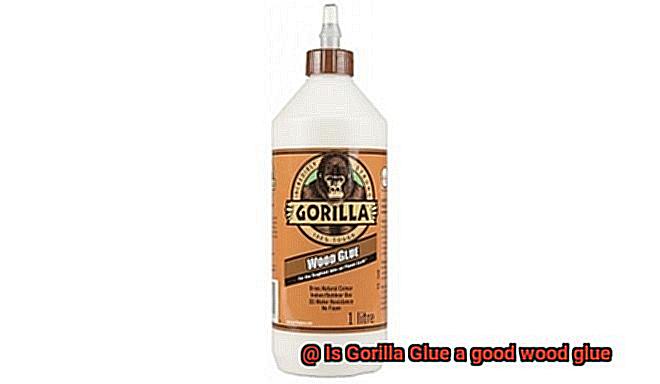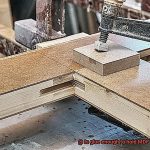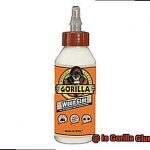Are you tired of your wood glue letting you down in the middle of a woodworking project?
Today, we’re going to take a deep dive into the world of Gorilla Glue and see if it’s really as good as they say for woodwork.
Whether you’re a seasoned pro or just a DIY enthusiast, finding the perfect adhesive is key to ensuring your wooden pieces are securely joined and have that professional touch. Gorilla Glue has made quite a name for itself in the adhesive market, but does it live up to its reputation when it comes to woodworking?
So grab your tools and let’s get ready to uncover the adhesive wonders of Gorilla Glue.
Advantages of Gorilla Glue
Contents
When it comes to woodworking and adhesive needs, finding the perfect glue that offers unparalleled strength, versatility, and durability is paramount. Look no further than Gorilla Glue. In this article, we will delve into the remarkable advantages of using Gorilla Glue, making it an unbeatable choice for all your bonding projects.
Unyielding Strength:
Gorilla Glue is renowned for its exceptional holding power. It creates a bond that securely joins different types of surfaces together, especially wood. Whether you’re working on a small DIY project or a professional woodworking task, Gorilla Glue ensures a reliable and long-lasting bond that can withstand the test of time.
Boundless Versatility:
Setting itself apart from other adhesives, Gorilla Glue exhibits remarkable versatility. Its magical formula enables it to adhere to various materials such as metal, glass, ceramic, fabric, and more. This means you can tackle multiple projects with just one product, making it incredibly convenient and cost-effective.
Immune to Water’s Wrath:
No need to worry about water damage ruining your projects. Gorilla Glue is waterproof once cured. It can fend off moisture and even endure immersion in water without compromising its bond strength. This feature makes it an excellent choice for outdoor applications or projects that may come into contact with water.
Swift Drying Superpowers:
Time is of the essence when it comes to completing woodworking projects. Thankfully, Gorilla Glue possesses a drying time that puts other adhesives to shame. Typically taking only 1-2 hours to dry, it allows you to efficiently move on to the next steps without excessive waiting time.
Gap-Filling Wizardry:
Imperfect or uneven wood surfaces? Fear not. Gorilla Glue excels in filling gaps and voids between wood pieces. Its expanding nature helps it fill in any irregularities, ensuring a tight and seamless bond. This feature is especially useful when working with challenging wood pieces that may have gaps or unevenness.
Temperature-Defying Stamina:
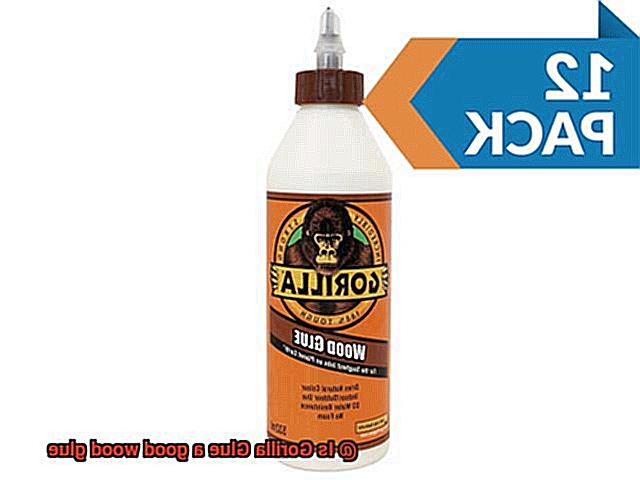
Gorilla Glue exhibits excellent temperature resistance, making it a champion adhesive for both indoor and outdoor applications. It can withstand extreme heat or cold without losing its adhesive properties, ensuring long-lasting bonds regardless of the environmental conditions.
Effortless Application:
Applying Gorilla Glue is a breeze, thanks to its user-friendly design. It comes in a convenient squeeze bottle or applicator, allowing for precise control and easy dispensing. The glue spreads evenly and smoothly, ensuring proper coverage for a strong bond. Say goodbye to messy glue applications and hello to effortless bonding.
Disadvantages of Gorilla Glue
In our previous section, we marveled at the incredible benefits of Gorilla Glue, the adhesive superhero that seems to conquer all. However, like any superhero, even Gorilla Glue has its kryptonite. Today, we’ll dive into the disadvantages of using Gorilla Glue for your woodworking projects. So strap on your safety goggles and get ready for a sticky exploration.
Messy Appearance:
Gorilla Glue’s expanding nature as it dries can be both a blessing and a curse. While this expansion ensures a strong bond, it can also lead to oozing out of joints, creating a messy and unsightly appearance. This can be particularly frustrating when working on fine woodworking projects that demand clean and precise glue lines.
Excessive Foaming:
In addition to the messiness, excessive foaming can be a real headache when working with Gorilla Glue. If you apply too much glue, it may foam excessively, making it difficult to control the amount used and resulting in a messy application. This is definitely something to watch out for when aiming for precision and finesse.
Longer Drying Time and Clamping Required:
Compared to other wood glues, Gorilla Glue has a longer drying time. While this can be advantageous for projects that require more assembly or adjustments time, it can be a disadvantage for time-sensitive endeavors or when multiple glue-ups are needed. Additionally, the extended drying time means clamping is required for a longer period, which can slow down your project timeline.
Irreversible and Difficult to Remove:
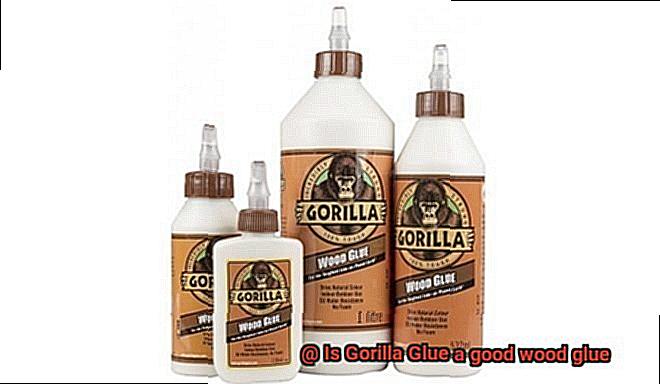
Gorilla Glue forms an incredibly strong bond that is difficult to break without damaging the wood. Unlike some other wood glues that can be softened or dissolved with water or solvents, Gorilla Glue’s bond is nearly irreversible. This means that if you make a mistake or need to make adjustments after the glue has cured, you’ll find yourself in a sticky situation.
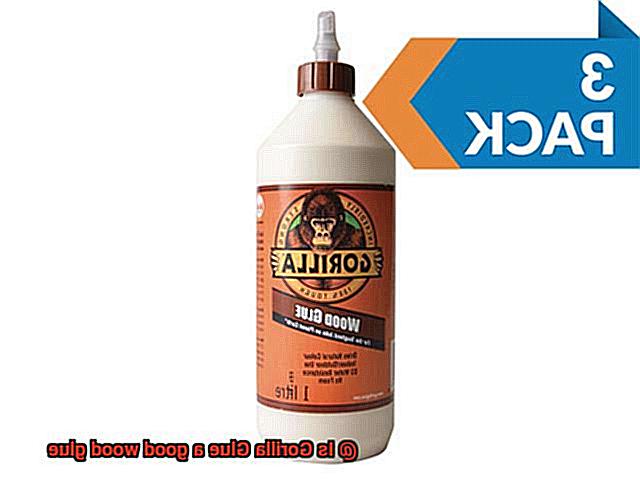
Unsuitable for Delicate Surfaces:
The foaming and expansion properties of Gorilla Glue make it unsuitable for use on surfaces that require tight fits or where excess glue cannot be easily cleaned up. Delicate finishes, veneers, and laminates can be easily damaged if exposed to Gorilla Glue. So if you’re working with such materials, it’s best to explore alternative adhesive options.
Strong Odor and Pricey:
Gorilla Glue isn’t just strong in its bonding abilities; it also comes with a strong odor. Proper ventilation is necessary when using this glue to minimize exposure to the fumes, especially in enclosed spaces. Additionally, Gorilla Glue does come with a higher price tag compared to traditional wood glues, so if you’re on a budget, you might want to explore more affordable alternatives.
Types of Projects Suitable for Gorilla Glue
Choosing the right adhesive is crucial in woodworking projects, ensuring a strong and durable bond. Among DIY enthusiasts and professionals, Gorilla Glue has emerged as the top choice. With its versatility and powerful bonding properties, Gorilla Glue can tackle a wide range of woodworking projects. In this article, we will explore the types of projects that are suitable for Gorilla Glue, making it the ultimate adhesive for all your woodworking needs.
Furniture Repairs:
When your favorite wooden chair wobbles or your beloved table has a broken leg, Gorilla Glue is here to save the day. Its strong bond effortlessly fixes loose joints and repairs broken furniture pieces, ensuring long-lasting durability.
Cabinet Making:
Cabinets need to be sturdy enough to withstand daily use. Gorilla Glue is the ideal adhesive for attaching cabinet doors, drawer fronts, and other components securely. Its strong bond ensures that your cabinets remain intact, even when filled with all your favorite items.
Woodworking Joints:
Creating strong joints is vital in woodworking projects. Gorilla Glue provides a reliable bond that can withstand stress and strain in butt joints, miter joints, or intricate joinery techniques like dovetails. Trust Gorilla Glue to hold your woodworking projects together with unwavering strength.
Outdoor Projects:
For outdoor furniture, planters, or wooden structures exposed to the elements, Gorilla Glue is the go-to adhesive. Its resistance to moisture makes it perfect for outdoor use without compromising its adhesive strength. Let Gorilla Glue be your partner in creating long-lasting and weather-resistant outdoor masterpieces.
Crafts and Hobby Projects:
Gorilla Glue’s versatility extends beyond large-scale woodworking projects. It can also be your trusted companion for smaller crafts and hobby projects involving wood. Whether making wooden toys, jewelry boxes, or intricate sculptures, Gorilla Glue provides a strong bond while allowing for precise application. Let your creativity soar with Gorilla Glue as your adhesive of choice.
Application and Curing Process of Gorilla Glue
Look no further. Gorilla Glue is here to save the day with its unrivaled strength and versatility. In this guide, we’ll dive into the application and curing process of Gorilla Glue, turning you into a glue pro in no time.
Preparing for Success:
Before diving into the gluing process, prepare your surfaces properly. Cleanliness is key, so ensure they are clean, dry, and free from dust or grease. A quick wipe with a clean cloth or brush will do the trick.
The Perfect Bond:
Activate the power of Gorilla Glue by applying it to damp surfaces. This enhances the bond’s strength. But beware, don’t oversaturate the wood; too much moisture can weaken the bond.
Applying Gorilla Glue:
Now comes the exciting part – applying the glue. Spread a thin layer of Gorilla Glue onto one of the surfaces using a brush, roller, or applicator. Apply an even coat for optimal adhesion.
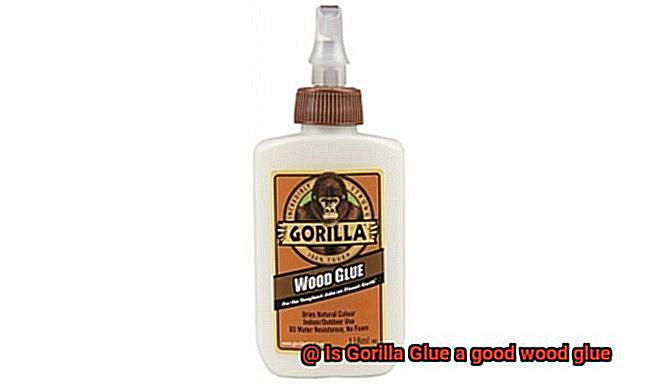
Creating a Solid Connection:
Firmly press the two surfaces together once the glue is applied. Use clamps or weights to keep them in place during curing. This ensures a strong and enduring bond.
The Waiting Game:
Patience is a virtue. Curing time varies based on temperature, humidity, and glue thickness. To be safe, allow at least 24 hours for the glue to cure before subjecting it to any stress or load.
The Magical Transformation:
Watch as Gorilla Glue expands and fills gaps or voids in the wood during curing. This creates an incredibly strong bond that withstands tough challenges. Avoid disturbing or moving the glued pieces until fully cured for maximum durability.
Perfecting the Final Touches:
Once cured, remove any excess glue using a chisel or sandpaper. It’s easier to remove when slightly soft than fully hardened.
The Final Word:
Gorilla Glue is a remarkable adhesive that meets the demands of various woodworking projects. While water-resistant, it’s not recommended for continuous water exposure. With proper application and curing, Gorilla Glue will be your go-to solution for strong bonds, repairing furniture, and bringing woodworking dreams to life.
Pros and Cons of Using Gorilla Glue in Woodworking Projects
Look no further than Gorilla Glue, the ultimate adhesive for all your woodworking needs. With its strong bond and versatile nature, Gorilla Glue has become a go-to choice for woodworkers around the world. But before you dive headfirst into the glue aisle, let’s explore the pros and cons of using Gorilla Glue in your woodworking projects.
First up, let’s talk about the advantages.
Advantages:
- Bonding versatility: Gorilla Glue can bond different types of wood, from hardwoods to softwoods and even composite woods. This means you can tackle a wide range of projects without having to switch between different glues. Talk about convenience.
- Water resistance: Gorilla Glue boasts excellent resistance to water and moisture. So if you’re working on an outdoor project or something that may come into contact with water, you can rest easy knowing that your bond will stay strong, rain or shine.
- Adhesive strength: Gorilla Glue packs a serious punch when it comes to adhesive strength. It can withstand heavy loads and stress, making it perfect for structural applications in your woodworking projects. Plus, it spreads more evenly than other wood glues, allowing you to use smaller amounts while still getting excellent coverage. That means you’ll save money and have fewer glue-related headaches.
Now, let’s address some potential downsides.
Disadvantages:
- Fast curing time: One thing to keep in mind is that Gorilla Glue has a fast curing time. Once applied, it starts to set within minutes, leaving little room for adjustments or corrections. So make sure you have everything properly aligned and positioned before diving in with the glue.
- Expanding nature: Another thing to watch out for is the expanding nature of Gorilla Glue as it cures. While this can be advantageous for filling gaps and providing extra strength, it can also cause problems if precise alignment is crucial. The pieces may shift or move during the curing process, so be sure to plan accordingly.
- Messiness: And let’s not forget about the mess. Gorilla Glue has a tendency to foam and squeeze out from joints as it cures, which can create a sticky situation (pun intended). Protecting surrounding areas and being prepared for some cleanup will save you from any unwanted adhesive residue.
- Dark brown color: Lastly, consider the color of the glue when dry. Gorilla Glue dries to a dark brown color, which may not be an issue for some projects. However, if you’re aiming for a clear or light-colored finish, you might want to explore alternatives that dry with a lighter hue.
Tips for Working with Gorilla Glue
Gorilla Glue is a remarkable adhesive that can work wonders for your woodworking projects. With its strong bond and versatility, it’s a go-to choice for many woodworkers. However, to make the most of this amazing glue, it’s essential to understand how to work with it effectively. In this article, we will share some valuable tips to ensure successful bonding with Gorilla Glue.
Prepare the Surfaces:
To achieve a strong bond, it’s crucial to start with clean and well-prepared surfaces. Before applying Gorilla Glue, thoroughly clean the surfaces you’ll be bonding to remove any dirt, dust, or old glue residue. Smooth the surfaces with sandpaper or a scraper for optimum contact. This will ensure that the glue adheres properly and creates a solid bond.
Activate the Glue:
Gorilla Glue is moisture activated, meaning it needs water to cure properly. Before applying the glue, slightly dampen one of the surfaces with a damp cloth or sponge. This will activate the adhesive properties of the glue and enhance the bonding process. Be careful not to saturate the surface as excessive moisture can weaken the bond.
Apply Sparingly:
Gorilla Glue expands as it cures, so it’s important to use it sparingly. Apply a thin layer of glue to one surface only, then press the two surfaces together firmly. This ensures that there is enough room for the glue to expand without overflowing and creating a messy situation. If any excess glue does squeeze out, wipe it away immediately with a damp cloth before it dries.
Secure with Pressure:
To achieve a strong and durable bond, apply pressure or use clamps to hold the bonded surfaces together while the glue cures. This ensures maximum contact between the wood pieces and helps create a sturdy connection. Depending on the size and shape of the project, you can use clamps, weights, or even tape to hold the pieces in place. Allow sufficient time for curing before removing the clamps or weights.
Allow Adequate Curing Time:
Patience is key when working with Gorilla Glue. While it reaches 80% of its strength within 1-2 hours, it’s best to let the glue cure for a minimum of 24 hours. This allows the glue to fully harden and create a robust bond. Avoid subjecting the bonded wood to stress or load until the glue has completely cured to ensure a long-lasting bond.
Alternatives to Gorilla Glue
In the world of woodworking, finding the perfect adhesive is crucial for achieving a strong and durable bond. While Gorilla Glue has gained popularity, there are several alternatives that deserve consideration. In this article, we will explore different glue options, their advantages, and disadvantages, allowing you to make an informed decision for your next woodworking project.
Titebond:
Titebond is a tried-and-true alternative to Gorilla Glue. With formulations like Titebond Original, Titebond II, and Titebond III, this wood glue offers exceptional bonding strength and dries quickly. Its affordability and versatility make Titebond a reliable choice for a wide variety of woodworking applications.
Elmer’s Carpenter’s Wood Glue:
For those on a budget, Elmer’s Carpenter’s Wood Glue is a fantastic alternative. Known for its ease of use and strong bond, this glue is suitable for both professionals and DIY enthusiasts. It excels in adhesion on porous surfaces, making it ideal for woodworking projects.
Eco-Friendly Options:
If environmental impact is a concern, there are eco-friendly alternatives to Gorilla Glue. Natural-based glues made from plant or animal-based adhesives provide biodegradable options that are less harmful to the environment. Traditional animal-based adhesive Hide glue, renowned for its strong bond and historical use in woodworking, is an excellent eco-friendly choice.
Polyurethane Glues:
Liquid Nails polyurethane glues offer versatility by working well on porous and non-porous surfaces alike. With exceptional bonding strength and resistance to water and heat, they are suitable for various woodworking projects. However, longer drying times may be required compared to other alternatives.
Epoxy Glues:
Epoxy glues consist of two components that need to be mixed before application. They provide a robust bond, excellent gap-filling properties, and resistance to water and chemicals. However, their longer curing times and the need for precise mixing can be drawbacks to consider.
Cyanoacrylate (CA) Glues:
Also known as super glue or instant glue, CA glues offer a quick and strong bond on wood surfaces. However, they may not be the best option for larger woodworking projects due to limited gap-filling capabilities.
Choosing the Right Glue:
When selecting an alternative to Gorilla Glue, consider factors such as drying time, bond strength, water resistance, and ease of use. To ensure compatibility with the wood surface, it’s essential to test the glue on a small area before committing to the entire project.
v9lVNMLz2FU” >
Also Read: Gorilla Glue – Glue Things
Conclusion
After careful evaluation and analysis, it can be confidently stated that Gorilla Glue is indeed an exceptional wood glue. Its remarkable adhesive properties make it a reliable choice for various woodworking projects. Whether you’re crafting intricate furniture or repairing broken wooden items, Gorilla Glue excels in providing a strong bond that withstands the test of time.
One of the standout features of Gorilla Glue is its incredible strength. It firmly holds wood pieces together, ensuring a secure and durable connection. This means you can trust Gorilla Glue to keep your wooden creations intact, even under heavy stress or constant use.
Not only does Gorilla Glue offer impressive strength, but it also boasts excellent versatility. It works effectively on various types of wood, from softwoods to hardwoods, making it suitable for a wide range of woodworking applications. Whether you’re working with pine, oak, or maple, Gorilla Glue will deliver consistent and reliable results.
Moreover, Gorilla Glue’s waterproof formula adds another layer of reliability to its performance. This feature makes it ideal for both indoor and outdoor projects where exposure to moisture is inevitable. You can have peace of mind knowing that your glued wooden surfaces will remain intact and unaffected by water damage.
In addition to its exceptional functionality, Gorilla Glue is also easy to use. Its thick consistency allows for precise application without worrying about drips or spills. The glue sets relatively quickly, reducing the waiting time and allowing you to proceed with your project efficiently.
When it comes to durability and longevity, Gorilla Glue truly stands out among its competitors. It ensures a long-lasting bond that won’t weaken over time or succumb to environmental factors. Your woodworking masterpieces deserve nothing less than the reliability offered by this remarkable wood glue.
In conclusion, if you’re searching for a top-notch wood glue that combines strength, versatility, waterproofing capabilities, ease of use, and long-lasting performance, look no further than Gorilla Glue. Its exceptional qualities make it a reliable companion for all your woodworking endeavors.

